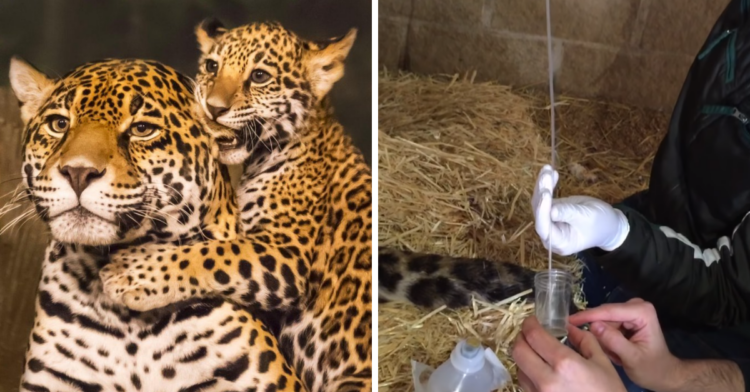Although there are so many amazing things that become possible as scientific methods and technologies develop, these triumphs often come after a long series of false starts and disappointments.
We see the successes of scientific studies, but often don’t see the failed attempts that led up to them.

For instance, although scientists were able to reactivate the cells of a 28,000-year-old woolly mammoth, that wasn’t the first mammoth they tried this on.
A team of veterinarians in Brazil had a similar journey with their Jaguar study.

Despite how powerful and ferocious they are, jaguars are in a vulnerable state right now.
The New York Post reported that poaching and habitat loss has put the species at risk.
Human institutions destroy jaguar land and block migration routes.

Farms, ranches, mines, residential subdivisions and border infrastructure all contribute to jaguar extinction rates .
In an effort to keep jaguar numbers stable, a team working for the Mata Ciliar organization in Jundiaí, Brazil has a mission.
![Image credit: Reddit | [deleted]](https://static.diply.com/aAPxAMCuftAUWiSnbOKo.jpg)
And that mission involves an effort to produce new jaguars through artificial insemination.
According to Regina Paz from Brazil’s Mata Grosso Federal University, they had been trying this without success since 2017.
After a year of failed attempts, they experienced a breakthrough.

The Research team was able to bring together five female jaguars who displayed the right health, age, reproductive vigor, and “favorable behavior” to actually give birth to a live cub this way.
First, they sedated a healthy, adult male jaguar for long enough to extract his sperm.

As the New York Post reported the females would not be sedated as much because they had already been conditioned to keep their stress levels down during ultrasounds and hormone treatments.
Once the team had analyzed and selected the most usable materials, the male jaguars’ contributions were inserted into the females.

The process used for this had already worked on other big cats, but jaguars remained the only species of them that hadn’t experienced a live birth this way.
One of the five suitable females chosen was five-year-old Bianca.

After she underwent the insemination process in November (not pictured), it would only take a little over three months before she successfully gave birth on February 16th.
Dr. Bill Swanson announced the birth as an important historical landmark.

“[the birth] invigorates the possibility of the use of assisted reproduction as a management tool” said Swanson, who is based at the Center for Conservation and Research of Endangered Wildlife ,
The Jaguar is the last of seven species of large-sized felines to undergo artificial insemination.

“It increases the genetic variability of (captive and wild) populations and the conservation of these endangered iconic cats” Swanson continued.
For the first day after the cub’s birth, everything seemed to be going well.

The newborn jaguar was a healthy female who had no issues snuggling up to and feeding from her mother.
Sadly, Bianca would end up eating the cub after its death the next day.

For anyone wondering whether the insemination process alienated Bianca from her cub, it turns out that it’s not unusual for a carnivorous animal like a jaguar to eat their young.
Whether they’re in the wild or in captivity, there’s always a chance that they’ll do this.
Though common in the wild, the outcome was surprising.

Researchers witnessed Bianca demonstrate ‘excellent maternal care’ on the first day. It is assumed that Bianca’s first time motherhood may have influenced the death of her cub, but the team will never know for sure.
It’s unclear whether the cub was even killed by Bianca.

“We don’t know why and cannot say if it was killed by the mother” explained Samuel Nuness of Mata Ciliar, “because it was not seen on the monitors on the second day”.
Despite the unfortunate ending, the team is still celebrating their breakthrough.

Researchers are celebrating the fact that their procedure resulted in a healthy baby and expect to inseminate the other jaguars throughout the year.
h/t: New York Post

















































